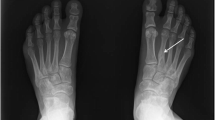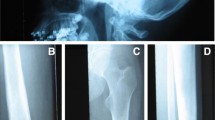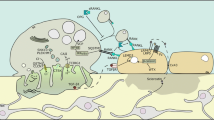Abstract.
Although knowledge of basic genetics in the field of sclerosing bone dysplasias is progressing, the radiologist still plays a pivotal role in the diagnosis of this relatively poorly understood group of disorders. Based on a target site approach, these anomalies are classified into three groups. Within each group, further differentiation can be made by distinctive clinical findings and by mode of inheritance: (a) dysplasias of endochondral bone formation: osteopetrosis (Albers-Schönberg disease), pycnodysostosis, enostosis, osteopoikilosis, osteopathia striata (Voorhoeve disease); (b) dysplasias of intramembranous bone formation: progressive diaphyseal dysplasia (Camurati-Engelmann disease) and variants, hyperostosis corticalis generalisata (Van Buchem disease) and variants; and (c) mixed sclerosing dysplasias: melorheostosis (Leri disease) and overlap syndromes.
Similar content being viewed by others
Author information
Authors and Affiliations
Additional information
Received: 11 January 2000; Revised: 5 April 2000; Accepted: 6 April 2000
Rights and permissions
About this article
Cite this article
Vanhoenacker, F., De Beuckeleer, L., Van Hul, W. et al. Sclerosing bone dysplasias: genetic and radioclinical features. Eur Radiol 10, 1423–1433 (2000). https://doi.org/10.1007/s003300000495
Issue Date:
DOI: https://doi.org/10.1007/s003300000495




